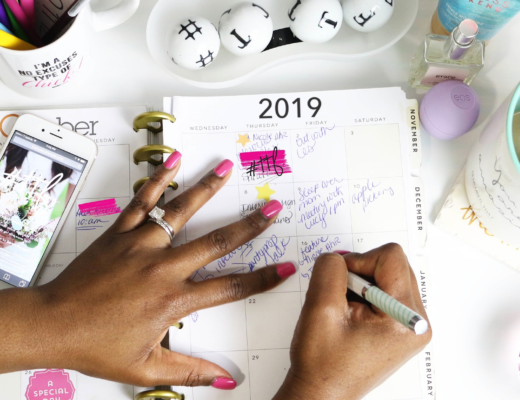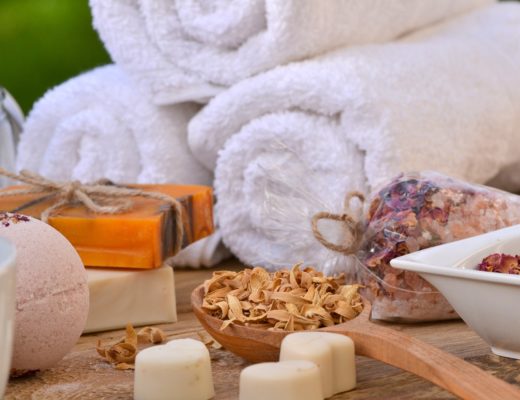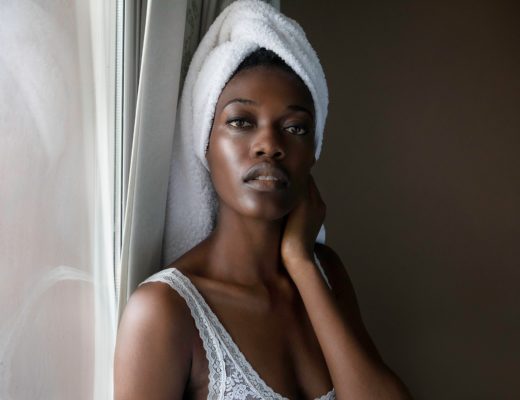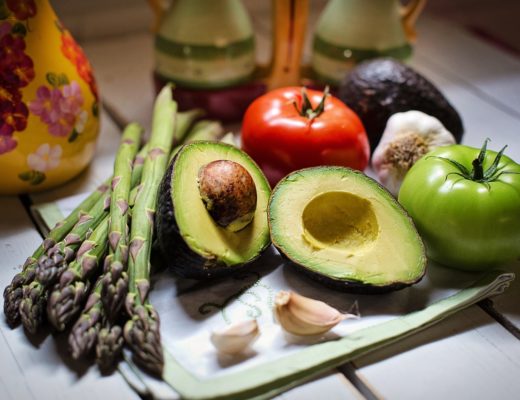This page may contain affiliate links. Read my full disclosure for more info.
Many naturals experience dry, brittle hair. It may feel rough and inflexible, tangle easily, shed a lot and never seem to grow. In this article, we will talk about how to moisturize natural hair. A consistent moisturizing routine will make your natural hair softer and help retain more length.
The Basics
When your hair is dry, it is lacking one key ingredient: water.Click To Tweet Well-moisturized hair does not break easily because it is pliable – think grass (soft and flexible) vs hay (stiff and brittle).The goal of moisturizing is simply adding water to your hair fibers, and keeping it there. Just as we have to drink water daily and water plants regularly, we need to add water to our hair frequently in order to keep it moisturized.
For those of us who have grown up wearing our hair straight, the idea of wetting our hair frequently isn’t something we are accustomed to. At the slightest hint of rain, we grabbed anything in sight – coat, grocery bag, trash bag, magazine, what have you – threw it over our heads and got out of there. We stretched the time between washes as long as we could. We wore plastic caps – or carefully clipped grocery bags – on our heads to protect it in the shower.
We believe water dries our hair, makes our straight hair “go back,” ruins our style, or all of the above. It is certainly true that water causes straightened hair to “go back,” but that’s a good thing – it shows that your hair is healthy and not heat damaged. Now that we are wearing our hair naturally we can embrace this fully!
How do I moisturize my hair?
So we now know that we need to add water to our hair to keep it moisturized. However, if you simply wet your hair, it will likely evaporate to the point of dryness before the next time you wet it.
Because of this, we need to “seal in” the moisture that the water provides. Adding a sealing product to damp hair will cause the water to evaporate more slowly so that some of the moisture will still be there by the time more water is added.
The basic method for moisturizing your hair is extremely simple:
1) Add water
2) Seal it in
Repeat when you start to notice dryness again – this time will vary for different hair types and environmental conditions. Be proactive and hydrate your hair when you see the first signs of dryness, not when your hair is stiff and begging for water. Life happens and we all wait too long at times, but this is the best case scenario.
It will likely take some experimenting to determine how often you need to add water and the best way to seal it for your unique head of hair. Many naturals do well with cleansing and sealing every other week and remoisturizing with a spray bottle and sealer every 2-3 days. That’s a good place to start as you begin to develop your hair care regimen.
So, what is a sealer?
Sealers are products that prevent the water in your hair from evaporating as quickly. Many people use oils to seal. Imagine two cups of water: one with a layer of oil on top and one without. The water in the cup with the oil layer is going to evaporate more slowly than the water without oil. The oil “seals” the water in the cup, and the same is true for your hair.
What should I use to seal?
What you use to seal your hair really depends on your hair and your overall routine. As mentioned above, some people have good results sealing with oils. Others use various homemade shea, mango, or other butter mixes. Many people have success with commercial moisturizing products.
I would recommend starting with a leave-in conditioner and a light oil such as sweet almond or jojoba. If that’s enough to keep your hair feeling moisturized for 2-3 days, stop there. If not, you can move on to trying heavier oils, creams or butters, and see how they work for you. If your hair is drier at the ends, you can apply the lighter product to the whole strand and the heavier product only to the ends to see how that fares.
The best thing you can do is pay attention to your hair and how various products and techniques affect it. Moisturized hair is soft and pliable, and tangles can be removed relatively easily (although it may take some patience). You should not hear the “snap crackle pop” of hairs breaking as you manipulate it. Minimal hair should appear on your sink and floor.
Popular methods
Over the past several years, various moisturizing methods have become extremely popular in the natural hair community.
LOC Method
The L.O.C. Method™ was created by Alikay Naturals Founder and CEO, Rochelle Graham-Campbell. LOC stands for Liquid, Oil, Cream.
A water-based liquid leave in is added to the hair. An oil is layered on top, then a creamy moisturizing product is layered on top of that for even more sealing power.
LCO (Liquid, Cream, Oil) is an adaptation of the LOC method where the cream is used first. I actually started using the LCO method without realizing there was a name for it. I stumbled on it by accident after noticing that my hair always felt more moisturized when I layered Kimmaytube’s leave in conditioner (the C in LCO) on damp hair followed by oils or butters.
How do you know which method will work best for you? Try a simple experiment where you part your hair down the middle and use one of the methods on either side of your head. I tried this and the LCO side felt slightly more moisturized after three days, although I would say that both sides needed to be remoisturized by that time. Which method works for you depends a lot on your own unique hair, the rest of your routine, and your environment (ie if you are in a humid or dry area).
Beware of Buildup
One thing to keep in mind with this method is that if you’re using products that are heavier or contain silicones to seal, you will want to use a cleansing product that will remove them effectively. Conditioner, clay, or sulfate free shampoo may or may not completely break down and remove the products. You may see more thorough cleansing with a shampoo that contains sulfates (particularly if you’re using silicones), or with a periodic clarifying shampoo.
Pay close attention to your hair and how it looks and feels – product buildup can lead to less pliability, less sheen, and increased breakage.
This is why I recommend starting with lighter products, and only using heavier ones if needed. The less you put on your hair, the less you will need to remove when it is time to cleanse your strands. This will enable you to use gentler cleansers, which will help to prevent dryness of your hair and scalp.
Max Hydration Method
Another popular moisturizing method for natural hair is the Max Hydration Method, first shared by member pinkecube on the Black Hair Media message forum. This method involves clarifying the hair with a baking soda rinse, then cowashing and detangling, clay rinsing, and finally conditioning and applying gel.
This method is recommended for people with type 4, low porosity hair as indicated in the post. The steps must be completed at least every 1-3 days, and ideally daily for the first 7 days). Washing the hair frequently adds water, and the leave-in conditioner and gel seal the water in the strands.
When using this method, keep an eye out for over-conditioning and hygral fatigue, especially if your hair is high porosity. Although baking soda does not permanently relax the hair, some people may experience dry hair or scalp.
A note on shine
When I was growing up, we were all about “oil sheen.” We would spray that stuff like there was no tomorrow, creating a huge cloud of oil droplets around our heads in an effort to get that shine we sometimes see on people with naturally straight hair.
The reality for natural hair is that it simply does not reflect light like straight hair. The twists and turns in our strands cause light to bounce off of it in a way that does not create a mirror finish. Some naturals’ hair is shinier than others, but for most of us, a better gage of moisture level and health is the way our hair feels. If your hair is moisturized, it will feel soft and flexible. This is what you want to look for as you determine whether a product or technique is working for you.
Conclusion
Moisturizing natural hair is easy once you know what it requires. It’s a matter of finding what works for your unique hair and the time to complete your regimen on a regular basis. With a consistent routine, you will experience healthy natural hair!
For more natural health, beauty, and lifestyle inspiration, join me on Instagram and Pinterest.







This is really insightful, moisture is definitely key for length retention and I feel that every naturals hair is slightly different so you need a bit of trial and error to get it right.
I wasn’t aware of the max hydration method – I have low porosity hair and thinking about giving it a try as I suffer from build up from time to time. Can you clarify re; doing it every day? Will it not dry your hair out if you wash it frequently?